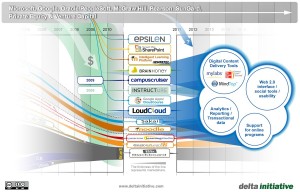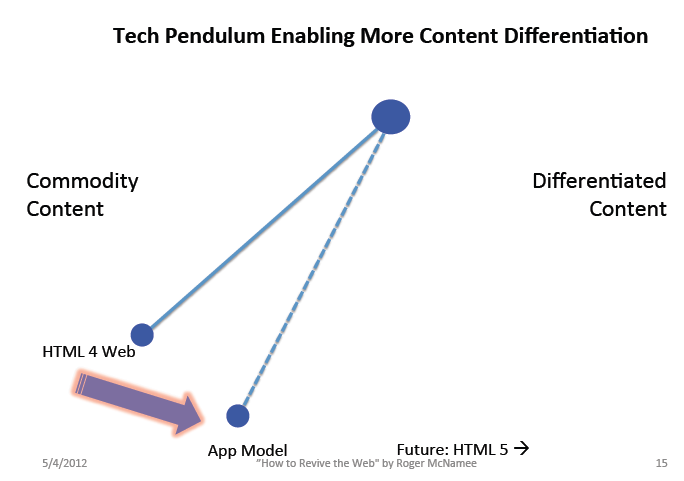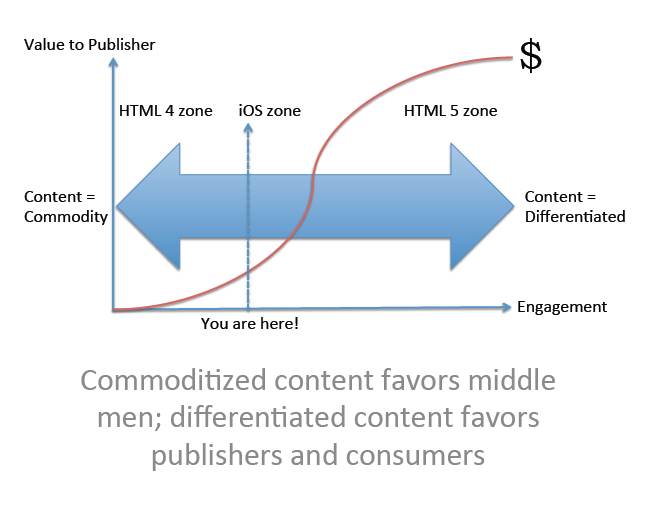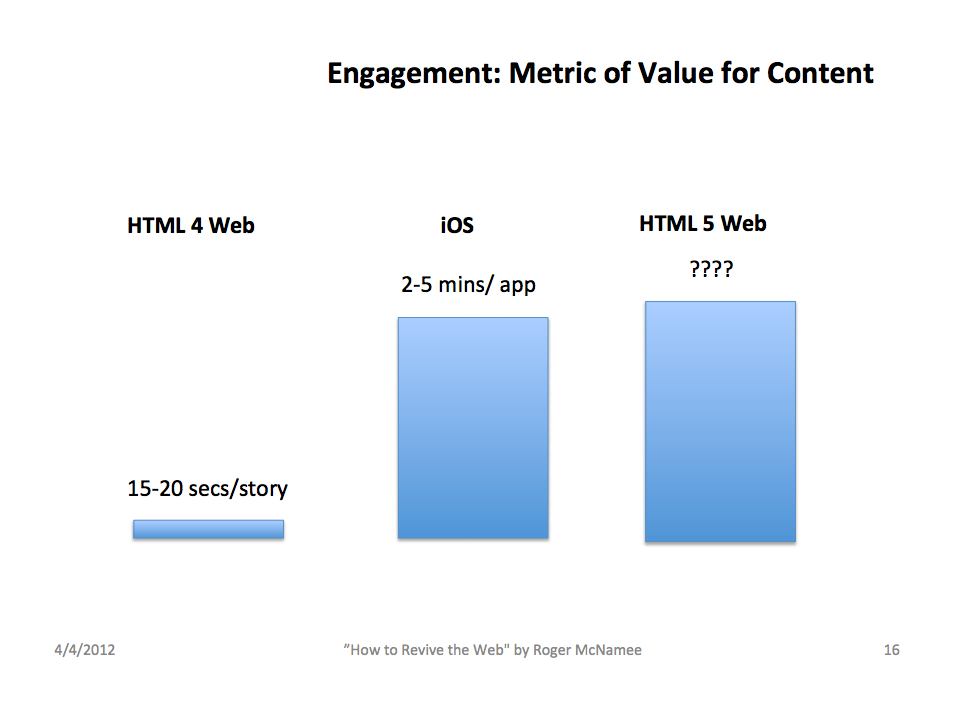One of the trends I highlighted last summer was that the LMS or learning platform market was overlapping the educational content market.
The lines are blurring between content delivery systems (e.g. Cengage MindTap, Pearson MyLabs, etc) and LMS. Content delivery and ability to keep students engaged within the content will drive much of the broader ed tech market. This integration of markets is being seen as a strategically important issue for institutions, particularly for online programs.

Last week Roger McNamee, co-founder and managing director with venture capital firm Elevation Partners, gave a presentation to the Mashable Connect conference titled “How to Revive the Web”. The presentation described how Apple won big by betting against the web and its prevailing culture (Mashable post here and Roger’s full presentation here). Roger’s theory is that Apple’s strategy was to move away from commoditized content, which most of the PC-based web (HTML4) assumed, by delivering content in a differentiated, elegant manner – tightly combining content and the delivery mechanism. Furthermore, as HTML5 emerges, this move will accelerate.
If this theory is correct, I think it helps explain the trend of the LMS market combining and blurring with the educational content market.
McNamee Theory
From the Mashable article:
“Most of all what Apple did was they charged $400 to $1,000 for the hardware that was necessary to get a differentiated user experience on data that 100% of their customers could get for free off a desktop device,” he said. “Every Apple customer has consciously voted with $400 to $1,000 against the world wide web.”
The result of that vote is a move away from the desktop experience of free, undifferentiated content. Mobile users don’t navigate the Internet with Google searches. They use apps, which deliver a better experience. And they spend much more time within those apps than on any web story.
McNamee’s point is that by combining content and delivery into an engaging experience, there is increased engagement. Investors see tremendous value in content-based platforms that can engage consumers, getting them to interact and spend more and more time with the systems. In another interesting aspect of this theory, the power and value of content publishers and consumers increases with differentiated content, and the value of middle men decreases.
Application to Ed Tech Markets
While I would not go so far as to make a direct comparison between iOS / HTML5 with today’s learning platforms, and while educational content has been anything but free, the macro trend described by McNamee is a key driver to what we are seeing in ed tech markets. From the investment side – private equity, venture capital, publisher internal investment, even university investment – there is a lot of money going into the concept of differentiated content that can engage students. Ed tech is also seeking tight integration of content and delivery into a differentiated, engaging experience leading to increased student engagement.
Note that the educational publishers have been making aggressive moves lately to take back control of the e-textbook or e-content experience from the middle men such as Inkling and Kno. Publishers want to own and control the differentiated experience, and it is a valuable market worth fighting for. The stronger middle men will also want to own the experience, but their relationship with publishers is tenuous in my opinion.
Furthermore, I think that the open content movement – OER – will need to develop an ecosystem that can deliver the differentiated experience to students and faculty. It will not be enough to provide free, high-quality content. For increased adoption of OER to occur, delivery platforms that can provide the overall experience will need to be developed and available to the market.
On the learning platform side, we are probably at the stage where we are seeing more choices in innovative systems, but we are not to the stage where students are truly benefiting from the overall experience and engaging with educational content in a meaningful way. Expect to see more investment in this area, but eventually the concept has yet to prove itself as a permanent change to the marketplace.
Update: Removed Boundless Learning as example of middle men



I couldn’t agree more with your comments about OER and other open content. Without a compelling delivery ecosystem that brings content from different repositories together easily, and one that delivers an enhanced user/learning experience, the market will not see its potential growth goals.
yes – the OER world is a real mess and requires loads of time to find quality T&L resources. Of course – I am very curious to see if it ever congeals in a way that threatens publishers (as I work for a publisher). The Boundless Learning folks are on the right path – but what a difficult one!
Rob and John – thanks for comments and confirmation about OER issues.
My original draft had a section about Boundless Learning and the importance of that model, but I pulled it out based on all the copyright / lawsuit baggage. Nevertheless, I agree that they are on the right path, or at least that business model is critical for the OER ecosystem to thrive in the future.